
Ten months of COVID-dominated trends in Canadian wine consumption and sales show that interprovincial trade barriers hamper market access at a time when wineries - and consumers! - need all the support they can get.
Sincere thanks to Les Dames d’Escoffier Ontario and Liz Palmer for the invitation to speak to the Women in Wine Talks Series! This material formed my presentation on October 29, 2020.
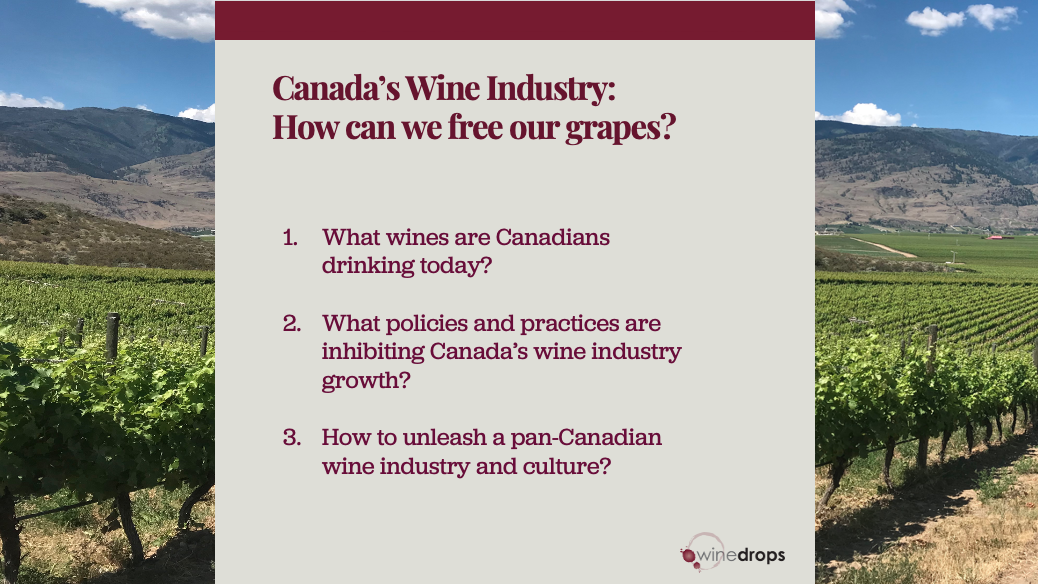
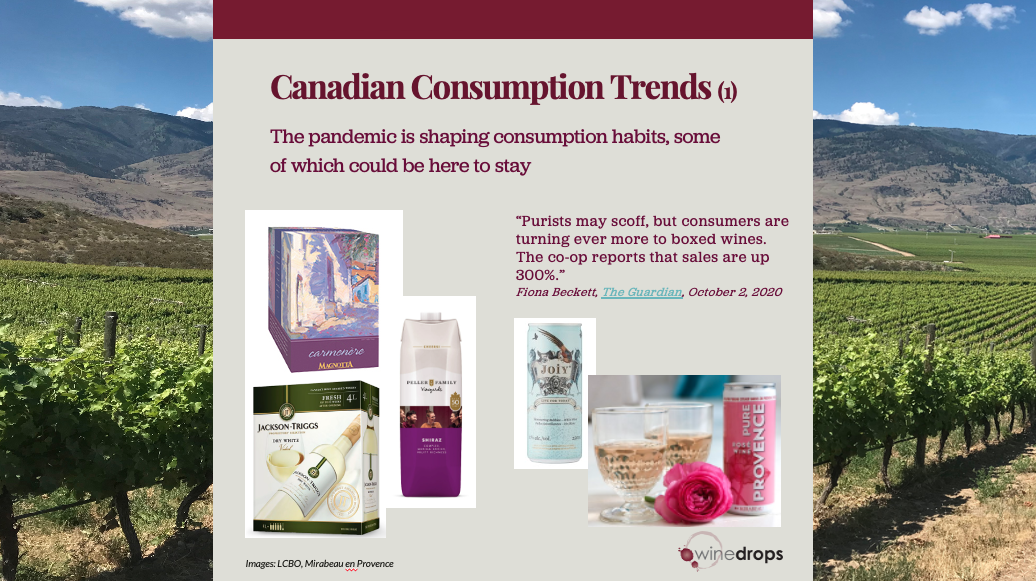
Growth in alternate formats - Box Wine during pandemic – appears to be here to stay (according to consumer surveys by large national wine producer) – 77% increase in sales thru BC private retail channel since March 2020. 40% surveyed expect to keep buying Box wine (3-4L) “post-pandemic”. This category is dominated by ICB (International & Canadian blend/bottled in Ontario/bottled in BC) - holding 84% share in BC. I understand YTD growth in ON is ~28%, also dominated by ICB.
And keep an eye on cans. This format (according to Wine Intelligence survey of Sept 2020) is poised to be a go-to for Millennial wine drinkers (both US and Canada). This group is 50% more likely to buy the can format once they are aware of it – double the general wine-drinking population. (Note the Mirabeau photo is from spring 2018 – trendsetters introduced ”canettes” at least to the European market a few years ago).
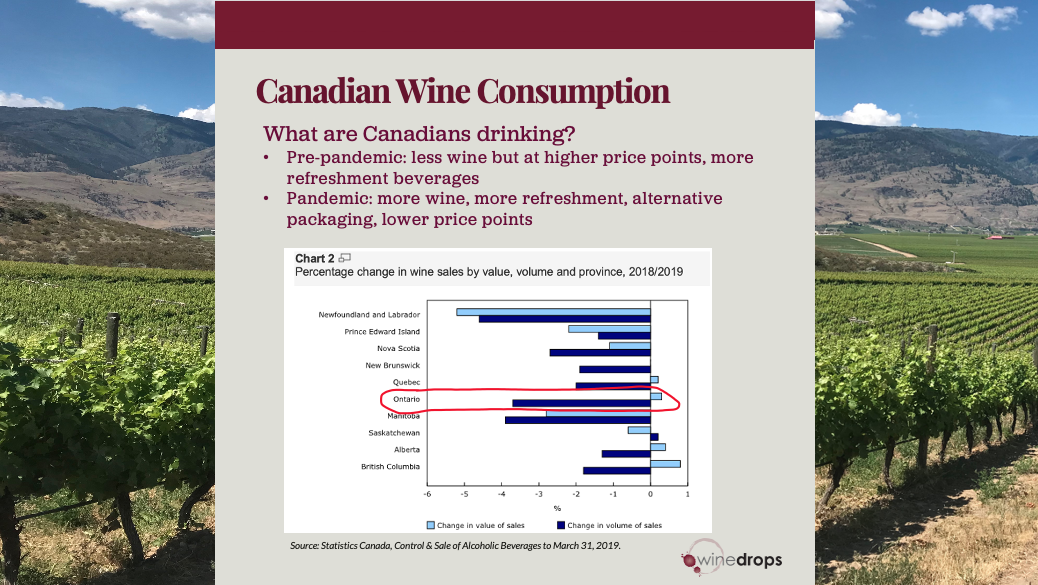
Wine sales edged up by the slowest pace since Statistics Canada began tracking alcohol sales in 1950.
By volume, wine sales decreased 2.5% to 506 million litres in 2018/2019, the first decline in the total volume of wine sold by liquor authorities since 1994.
Pandemic has demonstrated:
•Sensitivity to price/volume balance
•Loyalty to locally-produced brands
•Trust in established large brands
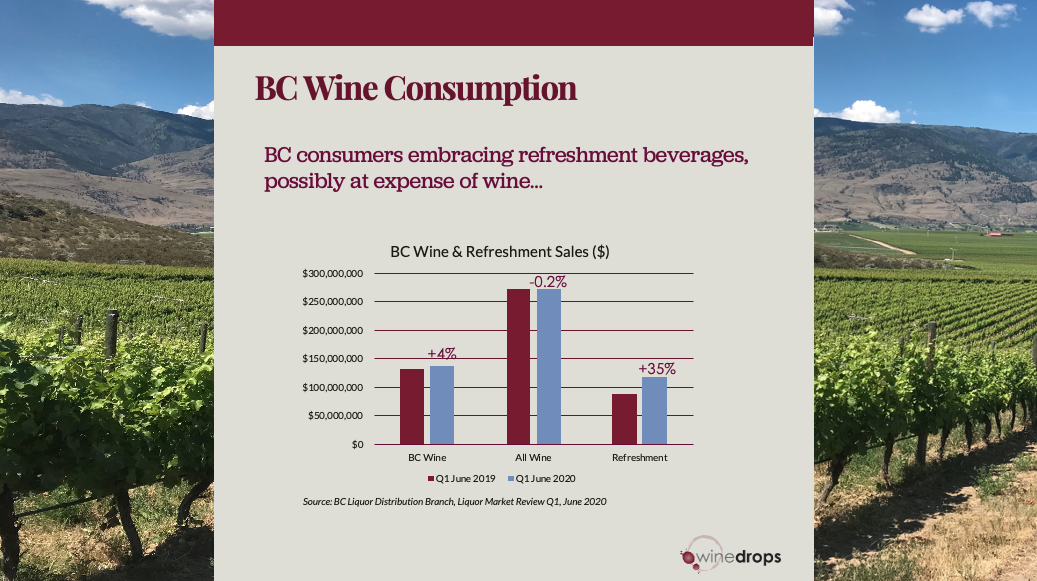
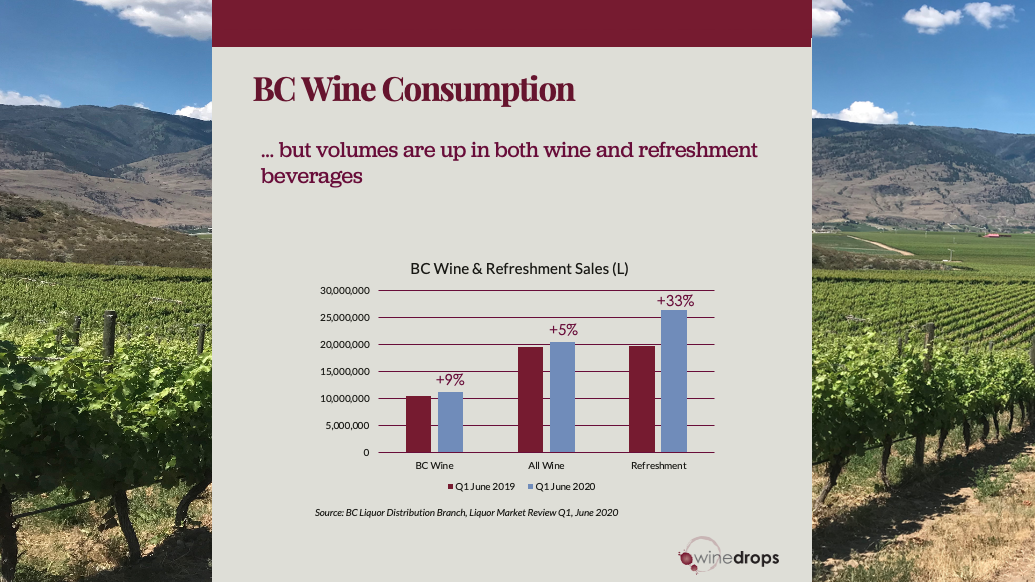
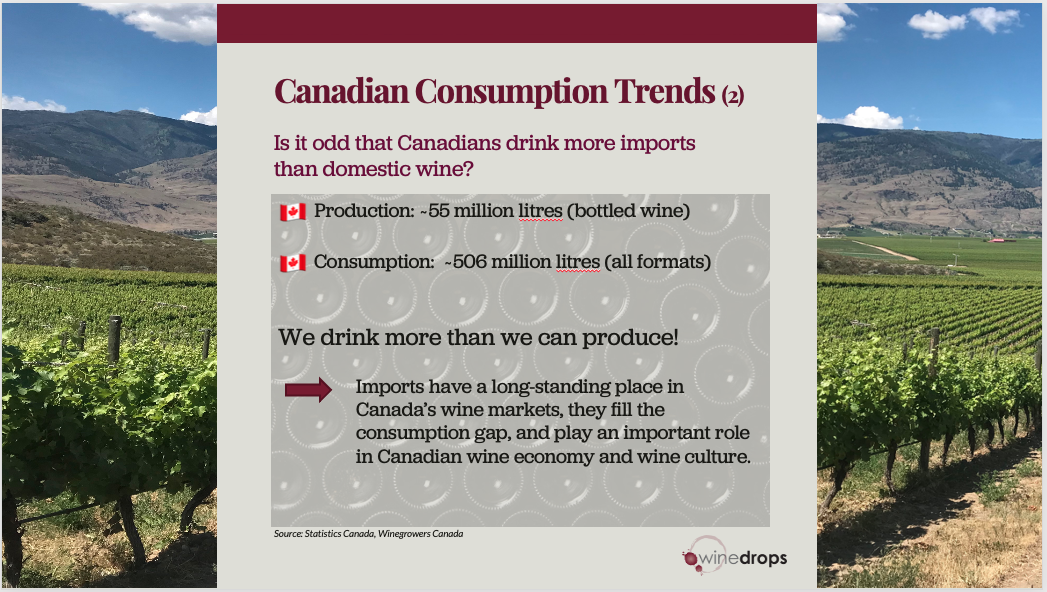
Canadian bottled wine production is about 1/10th of our consumption (acknowledging consumption figures here include wine in all formats). Canadian bulk wine also goes into ICB (in some provinces), and may also be exported.
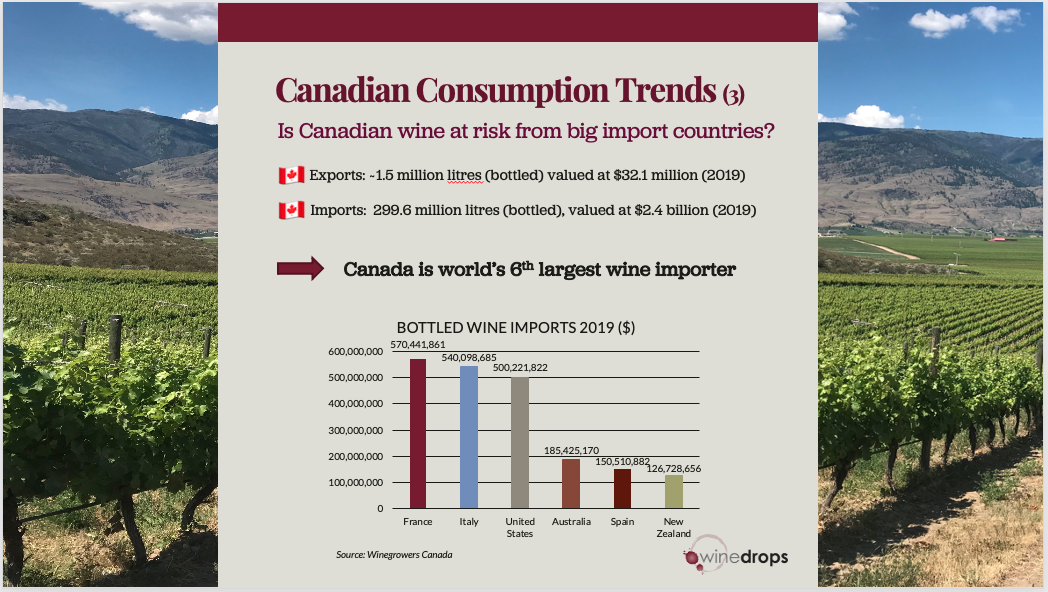
OIV (International Organisation of Wine and Vine) on Tuesday Oct 27 released stats (Customs data) comparing the first half of 2020 and 2019 indicate overall international wine exports fell 7 percent by volume and 12 percent by value.
Canada’s import volume and value were up 6 percent and 3 percent respectively.
Accounted for by ??? Anecdotes from both BC and Ontario mention 50+ truckloads (I mean big tankers) driving up from the US with juice for ICB in May-June.
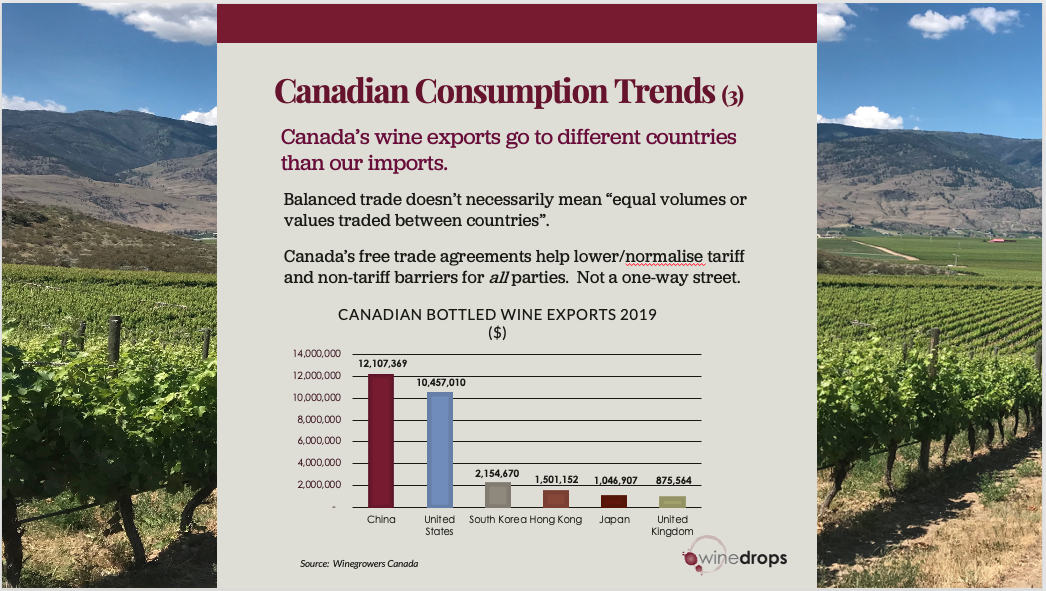
In 2019, icewine represented nearly 60% of Canada’s total export value ($18.7 million) and 13% of export volume.
Not much crossover between our import and export markets – only the US appears in top six for both.
Global Affairs Canada (led by Janet Dorozynski) is working on a targeted strategy with Canadian wineries to build appropriate export markets to maximise reputation and establish identity and quality niche.
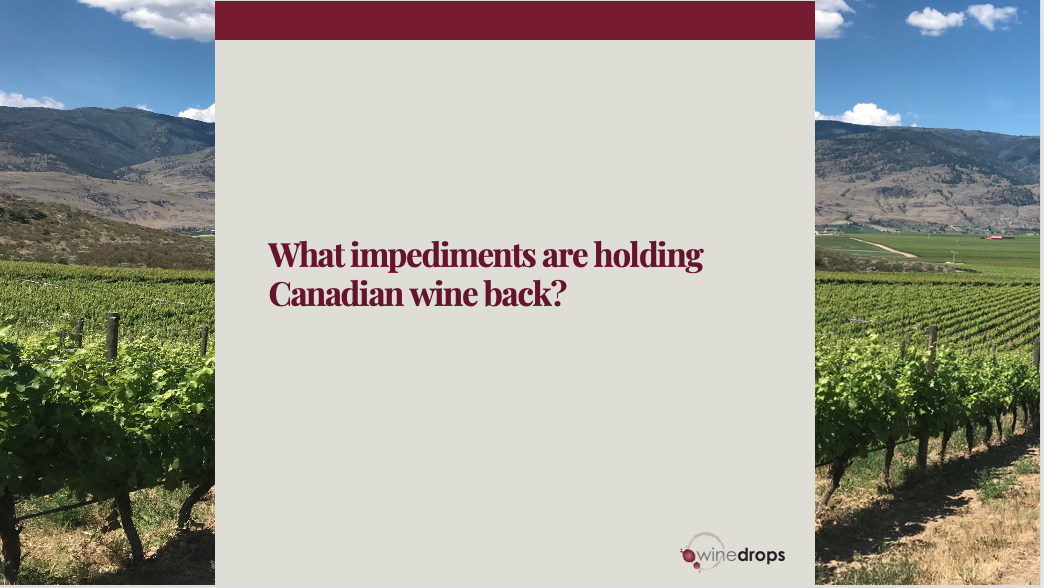
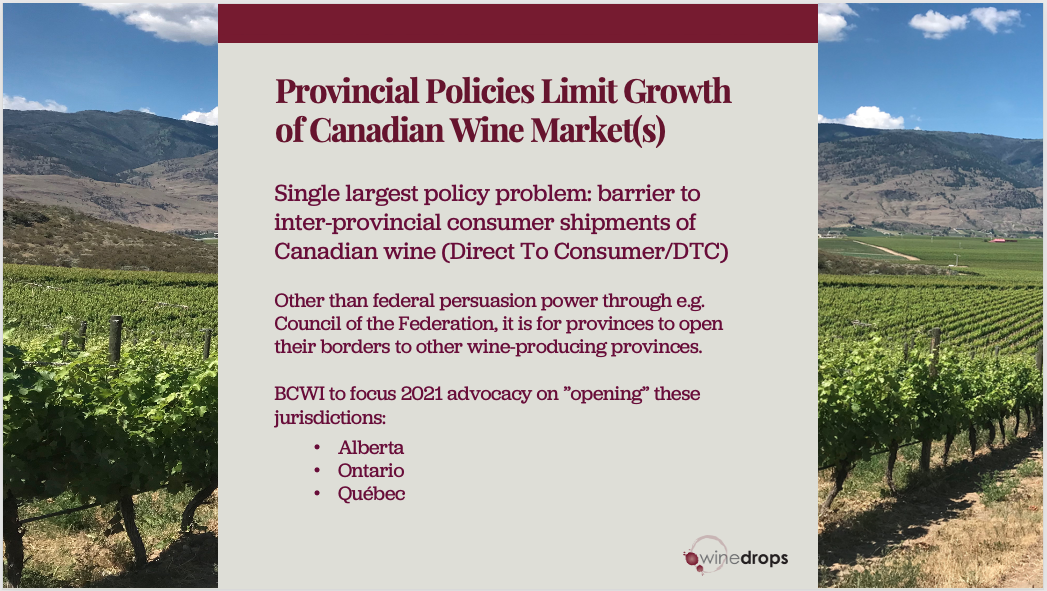
To be clear: this is a matter (principally) for provincial governments and their liquor monopolies to address:
•Federal government amended Criminal Code provision (Bill C-311) in 2012. BC opened its internal market later that year to DTC from other provinces.
•Feds removed requirement for interprovincially shipped wine to go through receiving province’s liquor authority (2019).
Not all prov liquor authorities have followed BC’s lead, including Premier Doug Ford’s (infamous) Canada Day decision this year to extend Ontario’s restrictive regulation for another six months (requiring all Canadian wine to go through the LCBO).
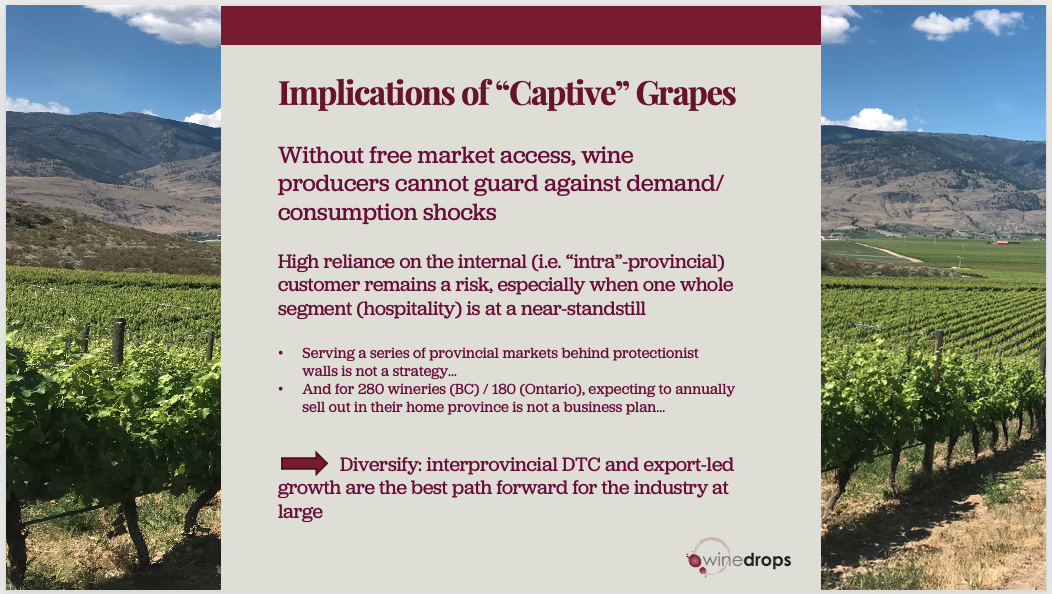
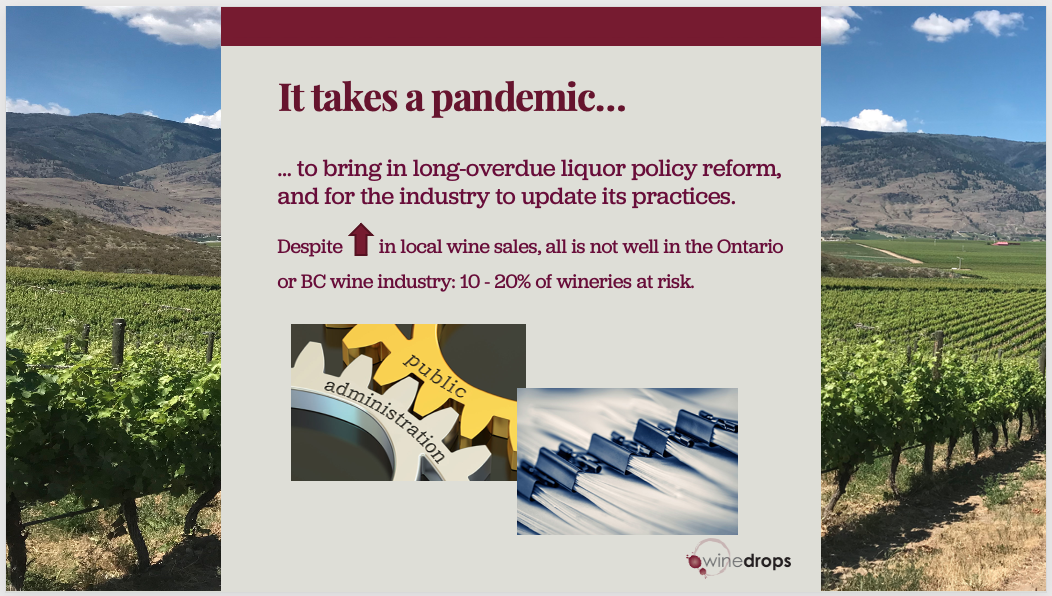
In terms of updated industry practices – here in the Okanagan there was widespread and rapid introduction of scheduled and fee-for-tasting model early this season. Haven’t heard any negatives from wineries, they report a better experience, more engaged visitors, and a higher spend.
BC Wine Institute Survey Results (Oct 2020)
industry-wide survey conducted by the BC Wine Institute (BCWI) in collaboration with the BC Grapegrowers’ Association found:
•83 per cent of BC wineries and grapegrowers have been negatively impacted by COVID-19.
•one in 10 BC wineries and grapegrowers worried they are at risk of closing due to COVID-19
•58 per cent seeing a loss in revenue and
•55 per cent having reduced access to customers.
Ontario – I understand 15%-20% of wineries not sure they will weather the COVID storm.
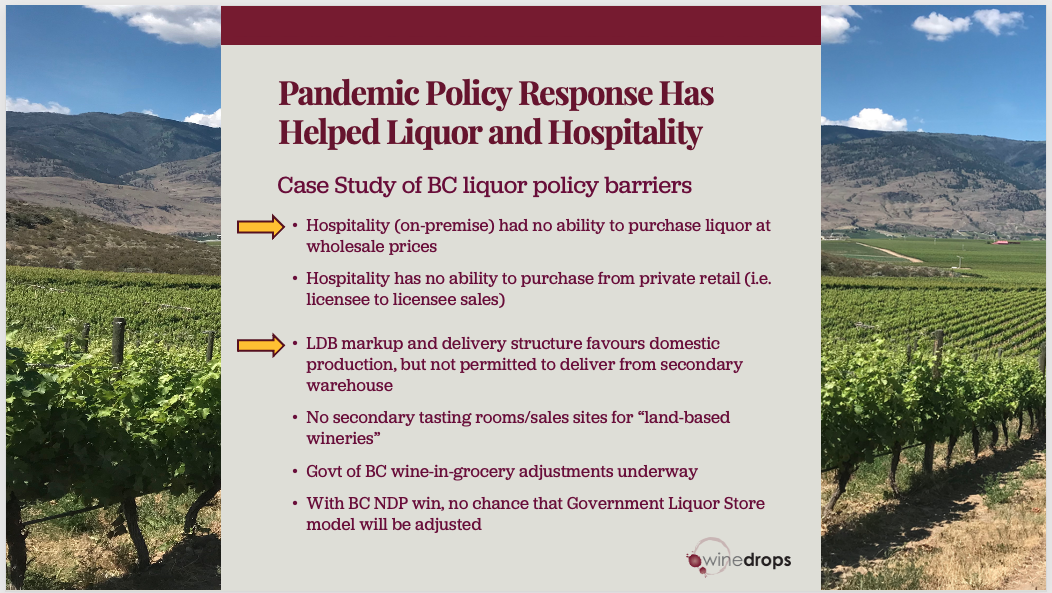
Golden arrows refer to policies that BC government (Attorney General) has amended due to pandemic, at least as temporary measures. While the To-Do list is long, to be fair, gov’t has introduced other targeted measures - most are operational, not “structural” policy changes, which are the focus of this presentation.
Refer to BC’s Business Technical Advisory Panel (BTAP) consultation process and report recommendations (on BC Ministry of Attorney General website) for complete list of policy and procedural priorities of the BC liquor and hospitality sectors.

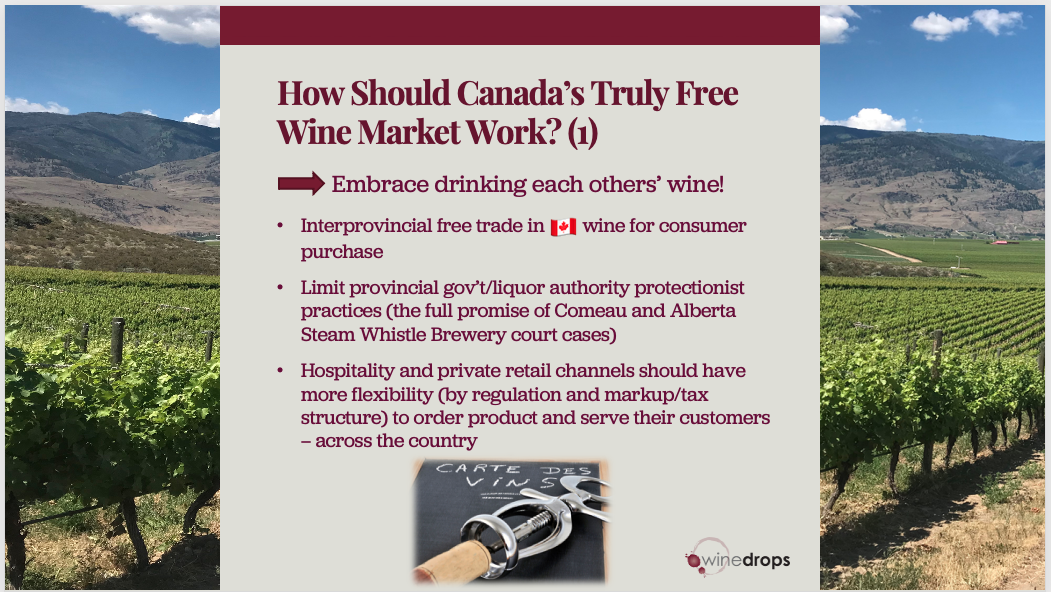
Speaking of “hospitality”, wineries, and probably their industry marketing bodies, should raise their game (and maintain it at a high level) for the customer experience – engaging, informing, educating, and entertaining.
Let’s turn the Canadian consumer (even more) on to Canadian wine! If it’s finally cool in London, it should be “Canadian cool” right here at home.
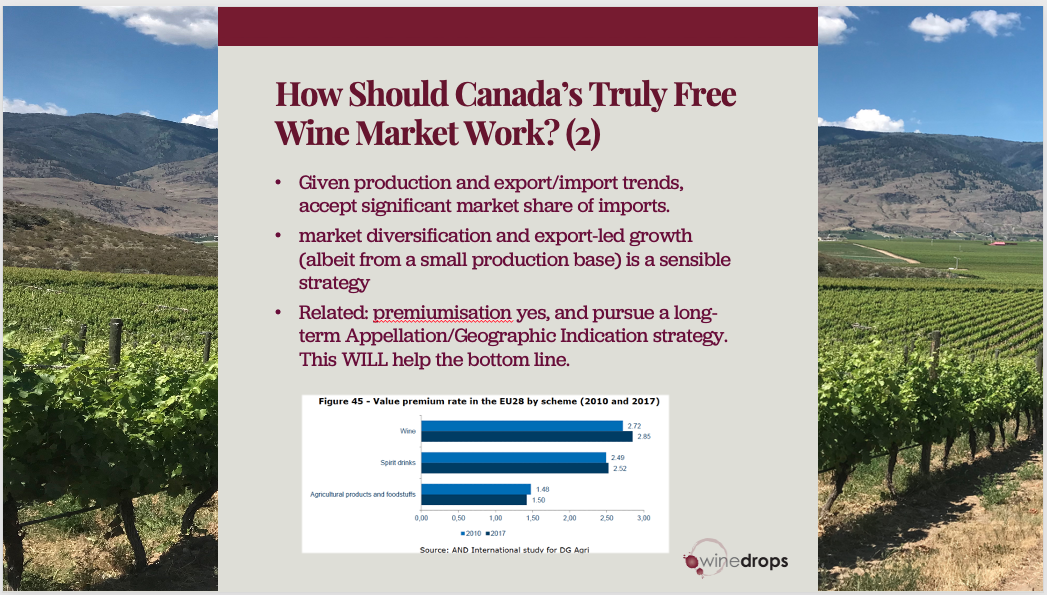
Findings from European Union Research on Geographic Indication (GI)-protected wines – see analysis and Canadian application in my recent WineDrops post: Unlocking the value of Canadian Appellations
•value of sales of GI-protected wine within the European market increased by 33% between 2010 and 2017
•volume increase was approximately four percent, which speaks to the significant price premium associated with well-established GI schemes.
•value of GI-protected wine exports to non-EU countries was up even more significantly increasing by 70% between 2010 and 2017 - 29% by volume over the same period.
In Canadian context, e.g. Ontario – Beamsville Bench or Twenty Mile Bench; Okanagan – Golden Mile Bench or Naramata Bench, can pursue the same strategies over the medium to long term. Modelling the Value Premium Rate (essentially a multiplier) can guide growth and pricing targets. Helps diversify markets and build financial resilience.

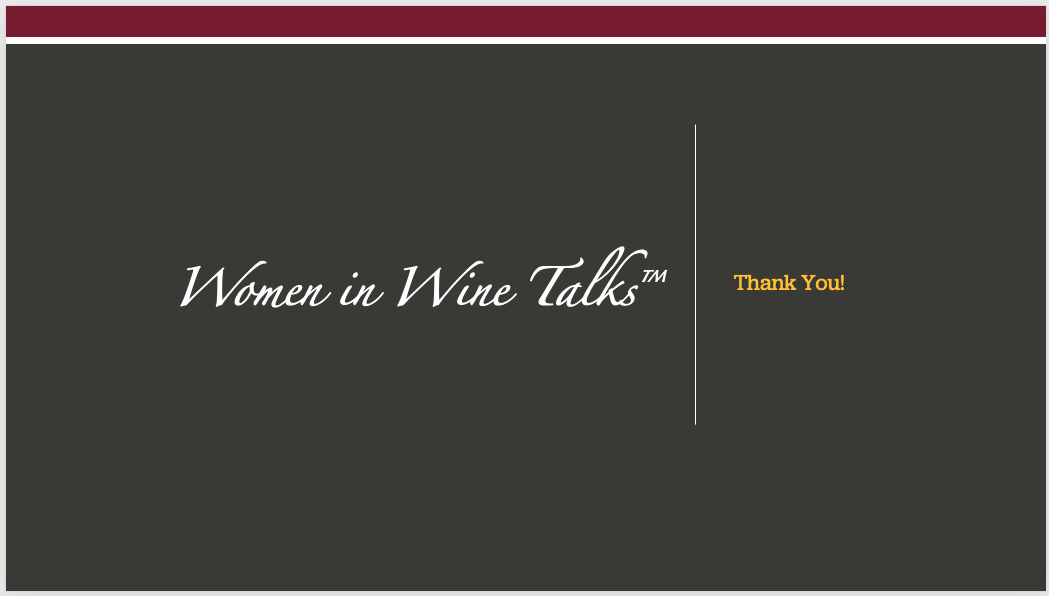
If you wish to receive all WineDrops posts, please join the mailing list here: https://winedrops.ca/contact.
